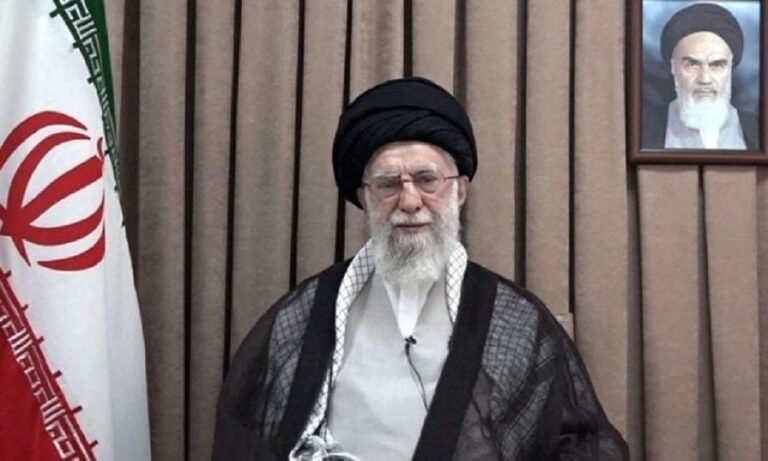Former President Donald Trump has escalated tensions with Iran by issuing a direct threat to the country’s supreme leader, Ayatollah Ali Khamenei, stating he remains safe “for now.” In a statement that underscores heightened hostility between the two nations, Trump’s remarks mark a significant moment in the already fraught U.S.-Iran relationship. This development has raised concerns among international observers about the potential for further escalation in the volatile Middle East region.
Trump escalates rhetoric against Iran’s supreme leader raising regional tensions
In a series of heated remarks, former President Donald Trump intensified his verbal attacks on Iran’s supreme leader, sparking concerns about escalating regional instability. Trump labeled the Iranian leader an “easy target” while noting, somewhat ambiguously, that he is “safe for now.” This rhetoric comes amid growing geopolitical tensions in the Middle East, with many analysts warning that inflammatory statements from influential figures risk further destabilizing an already volatile environment.
Experts emphasize the potential consequences of such aggressive posturing, highlighting key areas of concern:
- Security risks: Increased military confrontations and proxy conflicts.
- Diplomatic fallout: Deterioration of ongoing diplomatic efforts involving multiple countries.
- Economic impact: Disruptions in global oil markets and trade routes.
| Factor | Potential Impact |
|---|---|
| Military Escalation | Heightened clashes in the Persian Gulf region |
| International Relations | Strained ties between Western allies and Middle Eastern nations |
| Energy Markets | Volatility in oil prices due to supply concerns |
Analysis of geopolitical risks following Trump’s public threat to Iran’s top official
In the wake of Trump’s provocative statements targeting Iran’s supreme leader, global markets have responded with immediate caution, reflecting increased apprehension over potential military escalations. Analysts emphasize that such public threats amplify geopolitical tensions in an already volatile Middle East, raising concerns about possible retaliation that could disrupt international oil supplies and exacerbate regional instability. The rhetoric not only destabilizes diplomatic engagements but also elevates risks for key U.S. allies in the region, prompting renewed calls for strategic reassessment among defense and foreign policy experts.
Key geopolitical risks include:
- Escalation of Military Conflict: Heightened chances of direct confrontations between U.S. forces and Iranian-backed militias.
- Energy Market Volatility: Potential supply chain disruptions affecting global oil prices and economic stability.
- Diplomatic Setbacks: Diminished prospects for nuclear deal negotiations and multilateral cooperation.
- Regional Realignment: Increased influence of rival powers such as Russia and China in the Middle Eastern power balance.
| Risk Factor | Potential Impact | Short-Term Outlook |
|---|---|---|
| Military Escalation | Rising confrontations and casualties | High |
| Oil Supply Disruption | Price spikes and market jitteriness | Medium |
| Diplomatic Breakdown | Stalled talks and increased isolation | High |
| Regional Power Shift | Strategic influence by non-Western actors | Medium |
Implications for US foreign policy and diplomatic relations with Iran
The recent public threats directed at Iran‚Äôs supreme leader by former President Trump mark a notable escalation in rhetoric that could further complicate diplomatic efforts between Washington and Tehran. Such statements risk undermining any progress made in back-channel negotiations or regional de-escalation attempts by injecting hostility and reducing the likelihood of mutual trust. Analysts warn that provocative messaging may embolden hardliners within Iran’s political hierarchy, limiting the scope for moderation and peaceful resolution of long-standing tensions.
Key implications for US foreign policy include:
- Increased regional instability: Heightened rhetoric may fuel proxy conflicts in the Middle East, leading to unpredictable security challenges.
- Diplomatic isolation: Allies critical to US strategy might distance themselves from Washington’s approach, preferring engagement over bellicose threats.
- Strained nuclear negotiations: The viability of reviving the Iran nuclear deal could diminish as Iran perceives the US stance as overtly aggressive.
| Potential Impact | Short-term | Long-term |
|---|---|---|
| Diplomatic Relations | Increased tensions and stalled dialogues | Prolonged disengagement and distrust |
| Security Environment | Heightened alert and risk of conflict escalation | Entrenched regional instability |
| International Alliances | Mixed responses and potential fractures | Shift in regional alliances and influence |
Strategic recommendations for de-escalation and preventing conflict in the Middle East
The recent rhetoric underscoring the volatility in U.S.-Iran relations underscores a pressing need for a well-defined approach to mitigate tensions. Diplomacy must take precedence over confrontational posturing, with key stakeholders prioritizing open channels of communication. Emphasis on regional dialogue forums can help bridge misunderstandings while creating frameworks for conflict resolution rooted in mutual respect and shared interests.
Key measures to prevent escalation include:
- Reinvigorated diplomatic engagement: Renew talks via intermediaries or direct negotiation to address grievances and rebuild trust.
- Multilateral cooperation: Leverage international organizations and allies to mediate and ensure accountability.
- Economic incentives: Implement phased sanctions relief tied to verifiable actions that promote stability.
- De-escalation confidence-building measures: Establish clear red lines and avoid inflammatory statements.
| Action | Expected Outcome | Timeframe |
|---|---|---|
| Restart Nuclear Talks | Reduce proliferation risks | 3-6 months |
| Joint Security Committees | Minimize misunderstandings | 6-12 months |
| Economic Dialogue | Boost regional prosperity | 1 year+ |
Wrapping Up
In a continued escalation of tensions between the United States and Iran, former President Donald Trump’s recent remarks directed at Iran‚Äôs supreme leader underscore the volatile nature of their fraught relationship. As geopolitical stakes remain high, the international community watches closely, wary of any developments that could further destabilize an already fragile region. The unfolding rhetoric serves as a stark reminder of the ongoing challenges in U.S.-Iran relations and the enduring complexities of Middle East diplomacy.




